After crossing the hot and hassly border crossing from Costa Rica, I was soon into the noticeably more arid landscape of Nicaragua, zooming past the beautiful Lago de Ometepe, with its stunning twin volcanoes providing a scene of unparalleled visual harmony to my right for the first 100kms. It really felt for the first time since northern Argentina that I had at last, overtaken the rainy season, which had been advancing north with me. The countryside was dessicated and shades of dun brown, clearly not having seen rain for many months. I was soon into the outskirts of Managua and heading towards the suburb of Asosoca, nestled under yet another volcano (of which there are more in Nicaragua than there are pubs in Britain). I pulled up at Salvador's place and was greeted by him and Hamish and Emma. After having a shower to get the dust and sweat of the road of my skin, we soon settled down to and evening chatting and drinking in his lovely garden. We filled a large bucket with empty cerveza Victoria cans.
The next morning was spent nursing hangovers and taking longer than planned to start our respective motorcycle journeys. Emma and Hamish got off in the heat of the day to visit a friend in Esteli, before continuing north into Honduras. Salvador decided not to leave that day for his ground - breaking tour of Nicaragua on one of his Yamaha DT 175's. His organisation, Salcar, aims to raise awareness of health issues in the remoter parts of Nicaragua as well as increase access to healthcare by using small off - road bikes to get supplies to places with no other medical support. His trip was aiming to do this, on a route with no fixed roads, to publicise his work and find new locations that needed help, as well as establish a new touring route for his bike hire company, which he used to support his charitable work. I went out in the heat of the midday sun to see a bit of Managua and to get my sidestand repaired, with Salvador's friend, Ramon, kindly offering to be my guide.
Heading through some of the poorer areas of Managua to find the Soldador, I quickly remembered reading that Nicaragua is one of the poorest countries in Latin America. Having been a victim of more than its fair share of natural disasters and an equally tumultuous history, the Nicaraguans I met were friendly and gentle. They reminded me a lot of some of the Indians I have met in Dubai and India, gentle and unassuming, accepting and getting on with things, despite their difficult lives. Ramon was a case in point. Gently spoken, he came back to see me the next day to give me a keyring he had bought, with a fob of my name carved from wood which also said "receurdo mi tierra" on the back. We found the Soldador's house and I manouevered my bike over some steps and into his garden. I paid Trenta Cordobas (just over 2 quid) to get my dicky sidestand sorted. The welder, cut the stand through the middle, bent it to the right angle and then welded it all back together, whilst I, Ramon and his family watched, quaffing cold and refreshing coca cola that I had bought from the almacen opposite in the stifling humidity.
Well pleased with the repair, we went on into town, stopping off at the Catedral Viejo. Like the city centre that surrounded it, the building was oddly decrepid and eerily empty, despite its position on the main square. It was devastated by the 1972 Earthquake and had remained desolate ever since, with a clock in one of the pair of towers that remained as part of its facade, recording the time of the seismic dislocation at ten past three. Then we rode up to the Lemas de Tiscapa, a volcanic hilltop with a crater lake, great views over Lago Managua, a refreshing breeze and the monument to Sandino, the General who fought a relentless guerilla war to end the occupation of his country by US Marines from 1912 until 1933. Before they left, the Marines trained the Nicaraguan National Guard, commanded by the first Somoza, who promptly assasinated Sandino in 1934, until he was himself assasinated by Ruben Darien,a demented poet in 1956. Somoza's two sons then took it in turn to occupy the presidency, with US support, until the Sandinista Revolution of 1979.
After this brief insight into the turbulent geological and political history of Nicaragua from atop the Lemas de Tiscapa we rode on to the bizarre Huellas de Acaulisca. This "musuem" consists of a series of footprints from 4,000 BC, of twenty people walking across the muddy shore of Lago Managua, and then having the footprints entombed in volcanic ash. Returning to Salvador's via the supermercado, I cooked dinner and we had a quieter evening, joined by Yasuki, a gentle Japanese cyclist who was heading south from Vancouver. He had worked there in a shop for a few months to practice his English and earn money to finance his trip. He told us that the day before he was due to leave, he went back to the shop to say goodbye to everybody and his bike was stolen from outside. He obviously had a strong character inside his mall frame and gentle personality, as he had worked for a few months more to earn enough to buy a second bike and had consequently travelled through North America through the harsh winter. He was a really nice guy and I was happy to be able to give him my maps of South America to help him on his way.
The next day, Yasuki was off early and Salvador was fresher to be able to start his trip. His departure was delayed still further when he realised that Yasuki had left with a set of his house keys in his pocket, so I chased after him and retrieved them from him. After taking some photos of Salvador as he left, I went on a lovely ride, without my luggage through Managua, across to Masaya, with its interesting market and impressive volcano, which you could ride right to the top of. Then I went to Granada, parked up and had lunch, enjoying wandering around its colonial cobbled streets. I got back to Salvador's in the evening and went for a shower to freshen up. Throughout Latin America, this can prove to be an electrifying experience, and this was no exception. Lacking hot water boilers, a lot of people have electric heating elements attached to the shower head to heat the water as it comes through. Despite not being very effective, to my European sensibilities it also seemed downright dangerous to be stood underneath an electrical element, normally with exposed wires, whilst soaking wet. The situation normally proved even more stressful as the connecting water hose, which just pushed into the heating element, usually worked its way off from the force of the water pressure a little while after the shower was switched on. You then have to push it back on, whilst disconcertingly and simulataneously receiving a mild electrical shock through the flow of water. Salvador's shower proved to be no exception to the rule and hence my reluctance to shower any more than was strictly necessary for the duration of the trip.
The evening was spent with Salavador's friends and neighbours, Ramon, Juan and Sergio, who shared some of my dinner and beers. They gave me some of the Nicaraguan fruit of nispero in return, which had a "sabor muy rico", tasting like a pear but thickly sweet like honey. Electric pump from Salvador and the keyring from Ramon, with my name on it and "Recuerdo de mi tierra" written on the back. The next day I was up and off early to beat the searing heat and on my way to Leon. Leon cathedral is allegedly the largest in Latin America and although sizable, this struck me as another dubious guidebook statistic. Rumour has it that the 2 plans for this cathedral and the one in Lima got mixed up on the boat over from Spain, which is a lovely story, although there may be a more practical reason in that it was built so massively to withstand the imminent threat of earthquakes.
Baseball games were being played on Sunday morning in the fields at the roadside, as I took a couple of hours to make the journey that had taken Yasuki all day to complete in the opposite direction on his bicycle a few days earlier. The player's bright shirts, in bold primary colours were shimmering in their irridescent silkiness under the bright sun, stood out in stark clarity against the dessicated grass of the pastureland between Managua and Leon. Oddly for a country with an uneasy history with the United States, Nicaragua's sporting culture was dominated by baseball and basketball, with football coming a lowly third in popularity. Arriving in Leon too early to check in to my room in El Convento, a converted convent attached to the Iglesia San Francisco next door, I was able to change in the toilets and wandered into town in the heat of the day like a mad dog or an Englishman. The town square was "mas ruidoso" as lots of music was being played and a full volume air raid siren sounded at noon. There were also lot of fireworks and firecrackers in the evening, all to mark an obscure saint's day.
The cathedral's facade was impressive in the creamy afternoon light, but the interior, when it was eventually opened, was dull. It has always strck me as odd as to why church authorities think it is necessary to lock the "house of god", a practice that surely would not have been inspired by its founder (Jesus I mean, not Saint Peter). I checked emails and had a note from Duncan, which intimated that he was feeling lonely and directionless and was thinking of returning to Europe earlier than planned. I realised of course that this could have been a projection of my own feelings since having entered Central America, after the adventures and companionship of South America and the high adventure of my dash across Colombia and the journey around the Darien Gap by boat. Then I realised that it was in fact a reflection of another latent fear of being alone, probably the most potent fear I would have to conquer in the rest of my journey north. I resolved to open myself up to meeting as many new people as possible in the rest of the journey and felt thankful that Lena was coming to meet me for the final leg, that Hamish and Emma were just ahead of me in Honduras and that I had friends and relatives ahead who were planning to see me or had offered to let me stay with them.
The next day I was off and out predictably early and crossed into Honduras after taking a stressful "short cut" from Leon. Taking a north - easterly route from Leon direct towards Esteli, Jinotega and the border beyond passing the two pueblos of Dos Motes and El Ricazal in its two hundred or so kilometre length, it seemed a better option than returning to Managua to take the better Panamericana. The road rapidly deteriorated into arm - jolting pot holes and dusty sand with the added frustration that there were lots of impromptu roadblocks across the trail. Consisting of rope or wire pulled across my way, they were only manned by small children at this hour of the morning (why weren't they at school?) who were easy to laugh at when they demanded money or to intimidate them into dropping the barrier by riding straight towards them. I wouldn't have like to have taken this route in the dark though, when no doubt their older relatives would have been on duty.
Resigning myself to the frustrations of Central American border crossings (no interest in my carnet, difficulties with my Arabic title documents, plethora of additional "fees" to be paid and extra requirements, such as having to get the bike fumigated) it took me a few hours to get into Honduras at Los Manos. I made good progress up the Panamericana as the whole of Honduras seemed to be burning the stubble from the tobacco and maize in the roadside fields. I wondered what this, along with the startlingly bad, thick acrid diesel fumes from the buses and lorries that plied the hilly road did for the carbon footprint of Honduras. All the smog gave a hazy and prematurely dusky feel as the afternoon drew on, although it provided some welcome shade from the burning hot sun. I passed the modernist architecture and the favelas of Tegucigalpa, clinging to the hillsides. However, the burning had obviously gotten out of control and developed into forest fires from Comayagua, once again the parched landscape indicating that I had passed the northward march of the rainy season, as these straw fields were arid and seemed one step away from complete desertification and dessication. Slowed by roadblocks and police convoys to cross the worst - affected areas, I reluctantly stopped at a roadside hostel and missed my rendez - vous with Hamish and Emma in Gracias.
The next day I went straight to Copan Ruinas, checked into the cheap but cheerful Mar Jenny hostel and watched the Champions League Semi Final between Manchester United and Barcelona on TV in my room during the heat of the day. Later I explored the charming little colonial town, situated next to the Mayan ruins and the Guatamalan border. I enjoyed a large, homemade American style pizza and some cold Imperial lagers and had an early night, wanting to get up early and explore the archeological site. I had the complex to myself being the first to sign the next day, sharing the early morning coolness with the birds and animals that lived where the Mayans once lived. I was struck by the modern, cartoon like appearance of the carvings and reliefs at the site as well as the intertwined relationship with nature that the ruined city revealed. Not only was the site shared by the remains of pyramids and other buildings with large trees that remained from when the site was cleared from the surrounding jungle. The very fact that the city was a ruin was because of the periodic degradation of the surrounding land, which is why there are so many Mayan sites nearby, (Copan, Tikal, Palenque, Chichen Itza) as they moved on frequently. Whilst the Mayans no longer had a capital, they were still the dominant indigeno group in the region across southern Mexico and western Guatamala.
I know you can have a murder of crows and a gaggle of geese, but I don't know what the collective noun for macaws is. I think it should be a riot or a cacaphony. The macaws surrounding the site were loud and brash in sight and sound, looking like someone in the avian design factory's paintshop had just started their apprenticeship and used liberal primary splashes of Red, Blue and Yellow. I also saw a peccary rooting amongst the leaves in the jungle, but he scarpered off when I approached. Walking back into town as the heat and humidity increased, I saw Hamish and Emma's bike outside their hostel and went in to knock on their door. We had a good evening together catching up and were off the next day together to cross the neary border into Guatamala.
The border crossing was pretty straightforward and soon we were zooming through the Eastern Lowlands of Guatamala. The weather was very hot and as we stopped for a drink, Emma pointed to my back tyre. There was a large bulge in the side wall of the tyre, which seemed to be getting bigger as we looked at it, looking like a large angry zit on a teenager's cheek. Luckily, there was a Pinchazo just around the corner. Sergio initially tried to get a new tyre, but it was May 1st and the Labour Day Holiday so most places were shut. He set about patching the wall on the inside and also inserting a tube into the tubeless tyre for extra strength, a temporary repair that was good enough to get me to Antigua. It seemed that way back in Ecuador, when I had my accident the inside of the tyre had taken a beating and the outside was not in a good condition either, with a large crack across the centre right down to the steel belting. Despite the delay in the heat, Sergio seemed to be making good progress fixing the puncture for 60 quetzales (9 quid) as Hamish, Emma and I helped out and chatted to his other customers, including Maria the first local female biker we had met in the macho world of Latin America. We had pictures taken and were off on the road to Antigua.
Passing through the busy unmarked streets of Ciudad Guatamala, we zoomed down the twisty dual carraigeway that descended the slopes of the volcano and into Antigua de Guatamala, the old capital. Bouncing over the cobbled streets as darkness fell, Jorge came out to meet us and direct us to his hostel. He had a Swiss couple on bikes stay previously (Hamish and Emma knew them) and had heard our bikes. To get into the snug parking areas, not only did we have to bounce up the pavement and into a courtyard, but this also involved riding through a narrow mobile telephone shop that fronted the building onto the street. The hostal was opposite the ruined monastery of San Jeronimo, which was used as the government custom house for a few years before it was destroyed by the 1773 earthquake which marked the end of the city's period as the national capital. There were lots of ruined buildings, some of which had been restored, although destroyed again by the 1976 earthquake, and my favourite parts of San Jeronimo were the gardens and the crumbling, unrestored facade of the chapel at the rear. Although strewn with rubbish, as a lot of Guatamala is unfortunately, it was the most atmospheric, with the leperous statues of the Virgin Mary and San Jeronimo standing eithing side of what once must have been a grand portal.
It was also entertaining to stand on the terrace early in the morning and watch the carnival of chicken buses parade down Calzada Alameda Santa Lucia, with the geometrically exact cone of Volcan Pacaya providing a suitably theatric background. Tooting unecessarily, with the conductores leaning out and shouting the destinations and proclaiming the features of their particular converted school bus and the pasajeros clambering in the side, the back and up on the roof to stow their luggage it was a scene that I found endlessly entertaining. The main competition between the buses was visual however, with their various designs and logos, their bright primary designs reminded me of the macaws of Copan that I had seen a few days before. I popped back up the hill into Ciudad Guatamala to pick up a new tyre for my bike. Finding the motorbike repair area with the help of Andy, an American biker living in Guatamala, I selected a slightly smaller new Taiwanese "Barracuda" tyre for 420 quetzales or just over 30 quid. Although it was an unbranded tyre, I satisfied myself with the response from the salesman who said that they didn't have the Metzeler, Continental or Dunlop tyres I was familiar, that all of these were made in Taiwan or China anyway. I soon got it fitted by the local pinchazo, who scratched my rims badly trying to lever the slightly smaller tyre on, which would have annoyed me if the wheel wasn't already badly warped and scratched.
Next day we were off to San Pedro de Laguna and Lago de Atitlan. The fiesta de Santa Cruz was underway, and firecrackers and misty views of the beautiful lake greeted us as we rode through the Mayan villages on the twisty mountainous shoreline. The views that greeted us at each new turn were watery and diffuse, like a Turner painting. The trip was only 160kms west from Antigua, but provided a great variety of roads, motorway, twisty curvas sinuousas and a dirt section too. We stopped at the Hotel Villa Sol which we shared with guests to an Evangelical wedding. The town was remarkable for the number of varieties of protestant churches of every shade and persuasion in what we guessed was the result of some major missionary competition in the area. We then spent a day climbing Volcan San Pedro at 3,020 metres and kayaking and swimming on the lake. We saw, or rather heard wild turkeys on the trek with Vicente, who walked at a good pace. Hamish and I had the distinct impression that he wanted to get off quickly back to the celebrations below, which tempted him with sounds of singing and more firecrackers. The time in between was spent enjoying the local beer. Moza, a smooth dark beer was our favourite and Gallo was our favourite lager.
Next day we were off into Mexico and I was looking forward to spending longer in one larger country after the blur with which some of the smaller Central American nations had sped by. I also felt good because I was now entering North America and was enjoying Hamish and Emma's company, as well as the fact that every new country means a new range of beers to sample on the palette. Over the border and into Chiapas. We stopped briefly for something to eat and drink. I opted for Agua de Avena, a cooling oat drink, which had the reverse Ready Brek effect, a cooling blue halo, rather than the warming red one around the little boy going to school in his green parka that I remember from the TV adverts when I was a kid. The countryside was like Greece, with lots of stony fields and scrubby forests. We also knew we had entered North America as the 4WDs became noticeably bigger. Also the lengthy Banjercito process at the border (where I had to leave a deposit of 300 USD as a guarantee against selling my bike in Mexico, even though I had already paid more than 6,000 USD for my Carnet de Passage) was indicative of the beginnings of a diferent culture. I was stunned when at the end of the 2+ hours process, the clerk handed me a feedback form to complete on his performance!
The road ahead was generally a good one, although there were loads of topes y tumelos (sleeping policeman), some unmarked, which slowed our progress. We arrived at San Cristobal de las Casas just after dusk, and started to see bigger bikes now in town, race replicas and custom jobbies. Checking into the Hotel Virginia and parking up in the courtyard, we went out for tortas and muchas cervezas mexicanas. Dos Equis Amber was our favourite and this kept us up until the wee, small hours. It must have been someones birthday on the table next to us, as copious flaming drinks were being consumed, the blue light looked great in the dark bar. Most spectacularly when the barman sprinkled sugar over them to add a cascade of organge sparkles to the mini firework display for good measure. In the morning the pervasive Mexican music whilst still half cut, created a manic, comic atmosphere and rhythm to everything that I did. It was a sparklingly clear day though, with a clear sky and the cool air of 2,200 metres. We wandered around the colourful fruit and vegetable market, admired the pinyatas in the market stalls and the lovely Santo Domingo de Guzman church. Inside the cool shade of the nave, with its perpendicular chapels at the end, Mayan women performed rites and made incantations with candles and flowers, reminiscent of a scene from a Diego Rivera painting and at best, only semi Christian in nature.
We enjoyed a quieter night out in San Cristobal chatting and setting the world to rights. Similarly to discussions that Neil and I had, Hamish, Emma and I talked about how the timing of our trips was so important. Not only were so many of the trails we rode on in the process of being metalled and therefore changing the essential nature of the travel we were undertaking, but maybe the possibility of private individuals travelling on their own vehicles would no longer be possible in the future. The price of fuel alone was already becoming prohibitive, along with the increasingly bureaucratic and regulated nature of road travel and congestion charging in many countries and cities which made travel by foreigners more expensive and complicated. Next stop, another Mayan ruin in the jungle at Palenque.....
Subscribe to:
Post Comments (Atom)
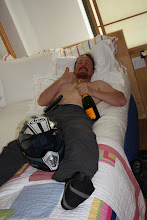
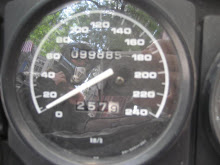
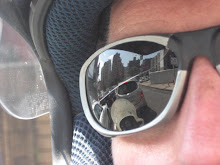
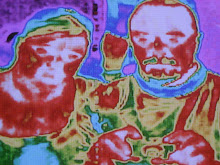





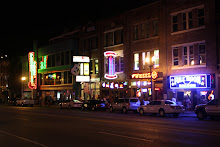



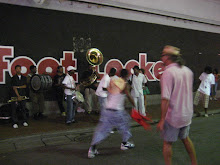


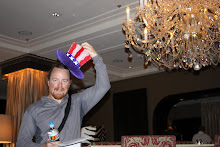
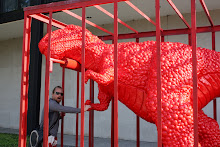
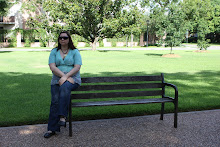



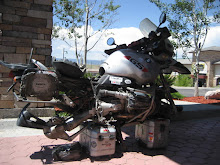


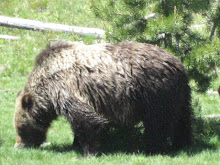
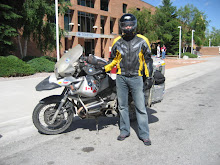
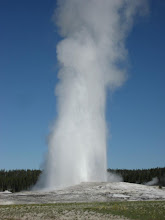



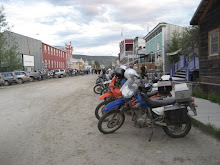


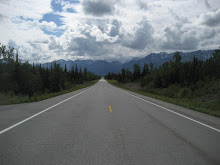

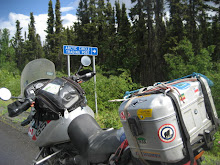
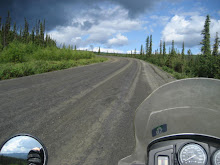
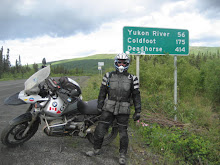
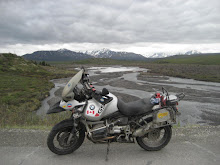
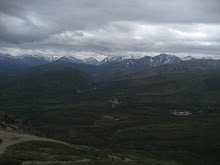
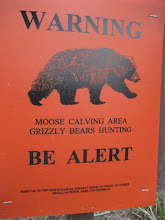


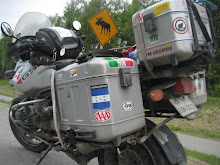
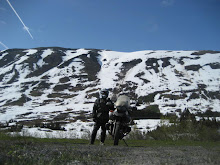

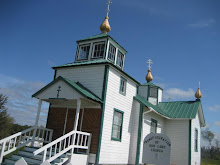
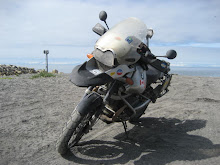

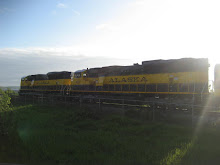
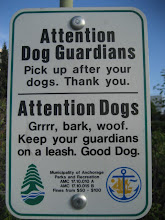
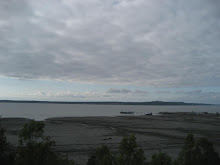




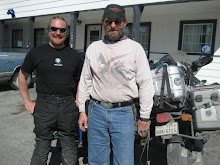

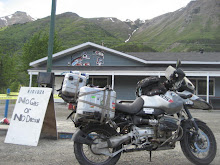




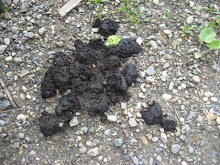

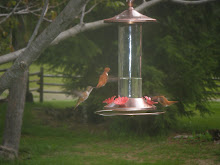
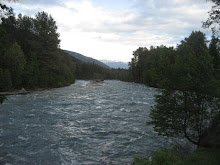
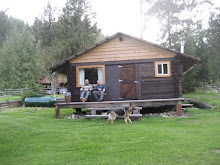
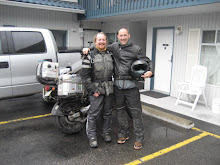
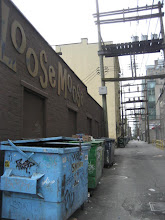
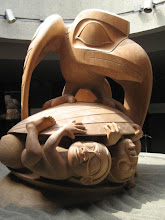
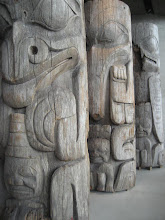
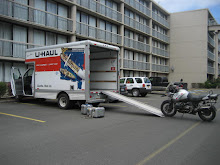




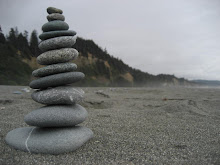
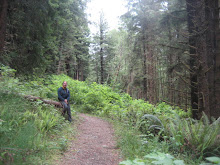
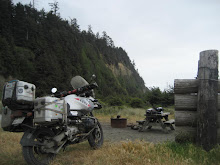
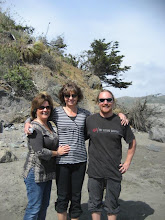

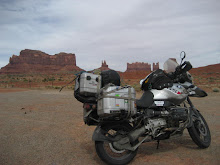
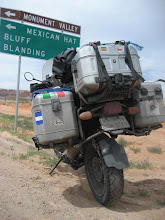
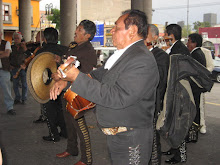
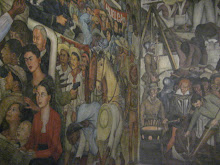



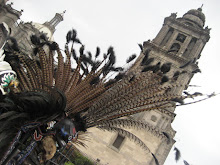
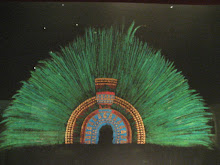
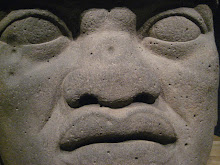
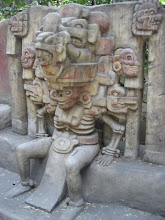






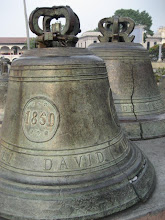
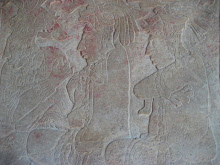
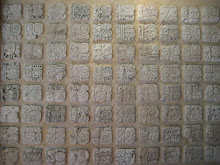
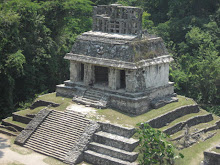




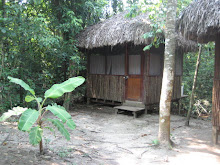
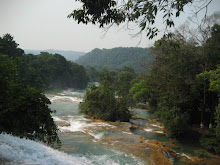
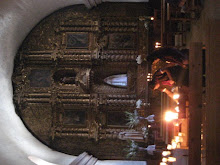
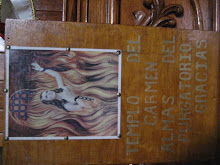
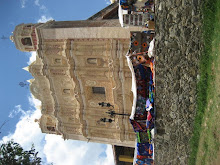


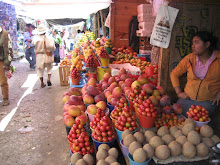
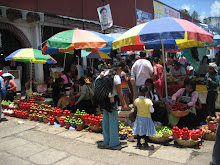
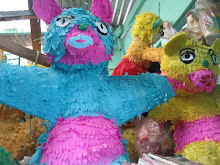
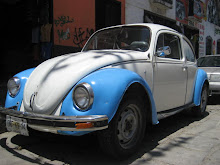
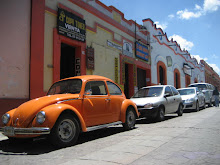

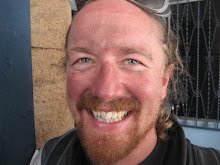
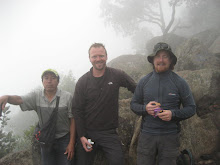


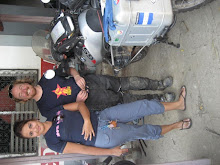
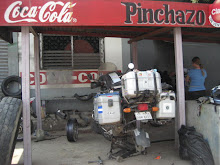

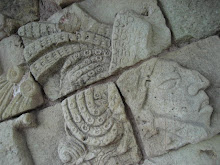

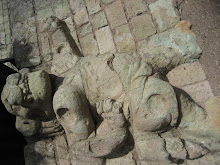


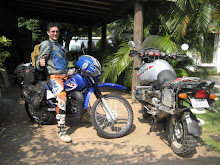







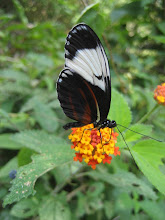
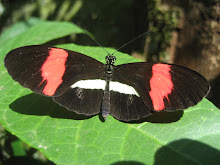
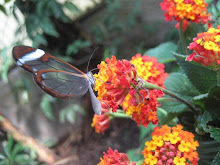
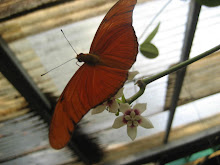
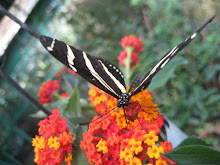
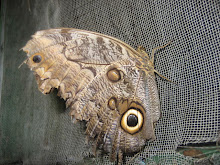

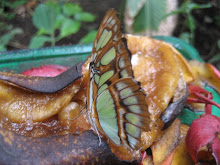
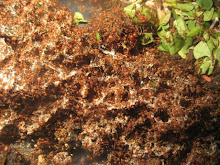
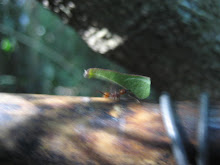


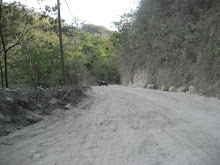

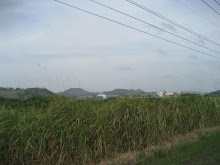

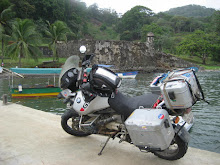
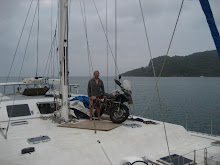
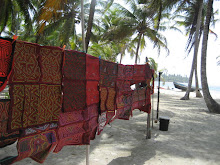

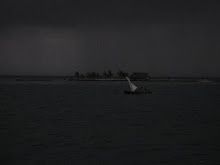
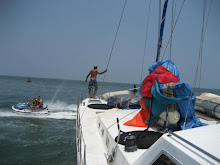
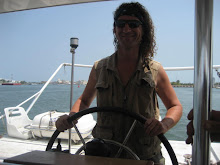

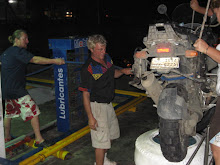
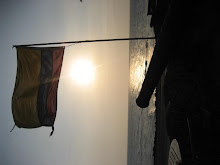
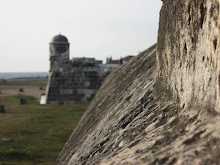
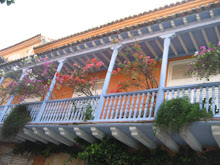
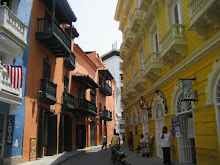
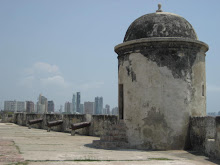
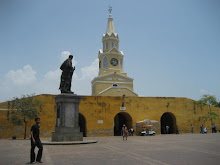
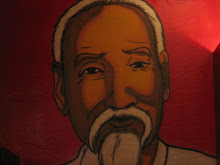
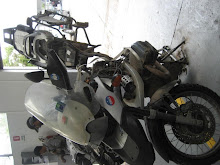



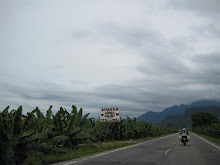
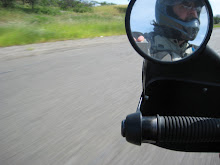
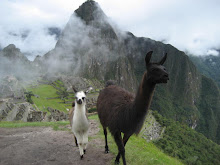



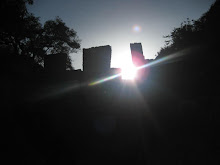


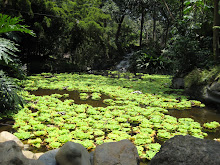
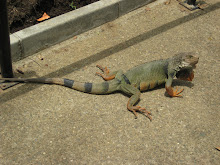



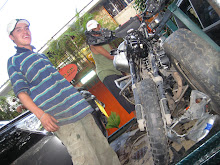

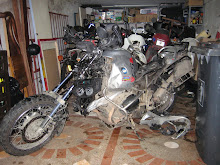
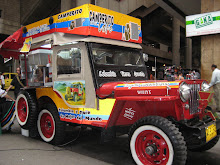
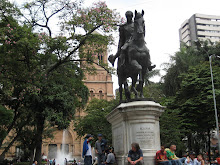
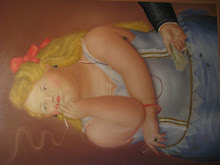
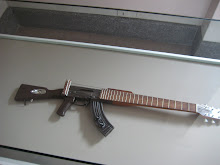
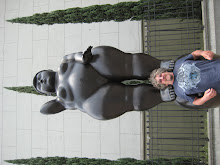
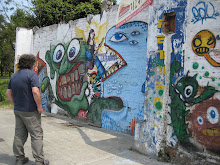


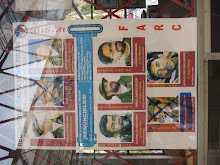
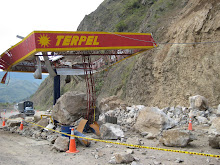
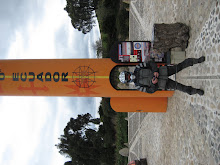
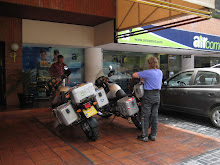
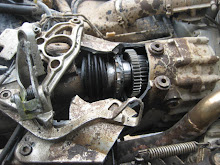
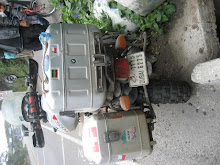

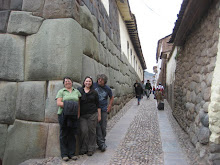


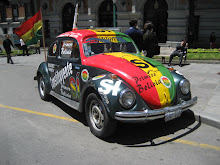
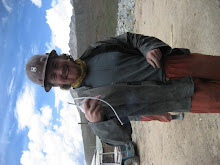


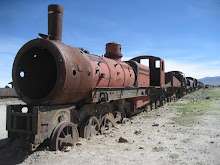



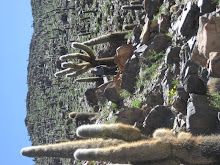
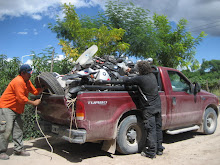
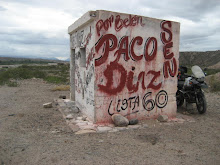

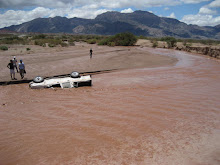
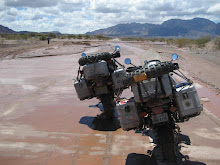
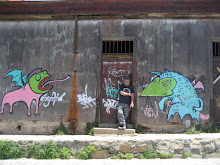
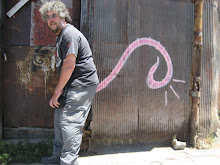



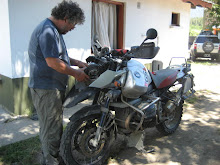
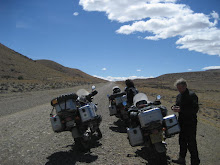







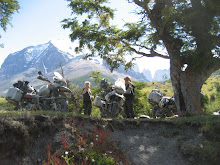

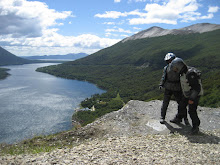

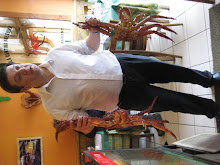
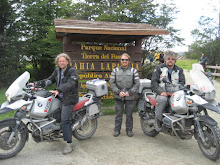

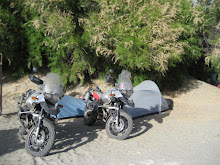




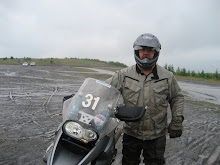
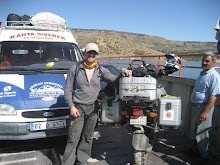
2 comments:
awwwwwwww Yasuki! I feel so bad for him having his bike stolen poor chap!
glad to hear you are making some progress with Hamisha and Emma they seem good company, as do the variety of beers that seem to pepper the narrative
123
YELP
LOL
LYL
xxx
I felt so sorry for Yasuki what a hero! You seem to have et some lovely people, Ramon sounds really sweet and Salvador not to mention Emma and Hamish. No doubt you will keep in touch. I loved the V Dubs in Mexico and the fruit and veg nmarket in Cristobal, keep your cathedrals, give me a colourful market anyday.
Love Natxxx
Post a Comment